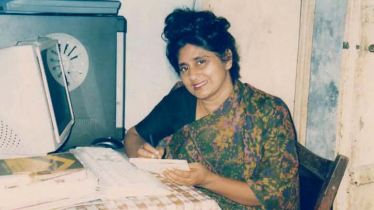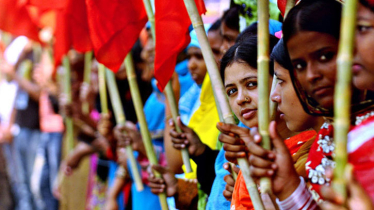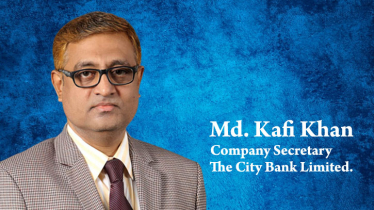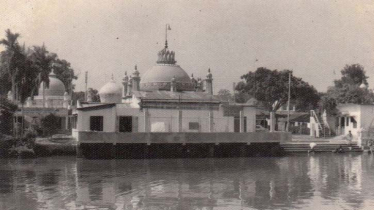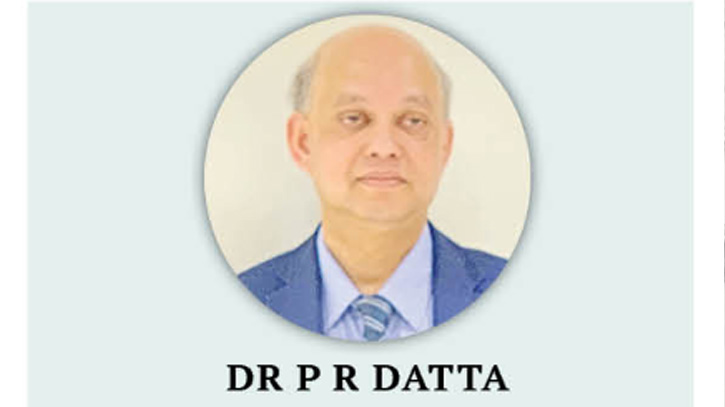
Photo: TDM
Countless people from different parts of the world have found a place to live in the world-famous city on the banks of the Thames River. A house of dreams has been built, a dependence of a unique faith of laughter, tears and enthusiasm.Indians came to England long before the British Empire expanded in India. In the footsteps of many famous and world-renowned Bengali thinkers and philosophers, London has been shaped by wealth and prosperity. One of the earliest Bengali immigrants to Britain was Captain Sheikh Din Muhammad of the British East India Company, who migrated to London. He founded the first Indian restaurant in London, Hindustan Coffee House, in 1810. But centuries before him, the first Western-educated Indian to live in Britain was Itisam-ud-Din, a Bengali Muslim cleric, munshi and diplomat of the Mughal Empire who brought his servant Muhammad Mukim with him in 1765 during the reign of King George III. How much water rolled into the chest of the Thames? Over time, the city’s appearance, luxury and the traditional river flowing along its side have changed. In the interaction of Bengalis coming and going to London, East and Oriental philosophy, history, literature and culture have gradually developed and a pure kinship between the people of this island of pleasure. This island has become a source of inspiration for many Bengalis. No wonder the UK is the birthplace of the Indian National Congress and home to some of India’s most influential writers and intellectuals. Recently, many Bengalis have been making their mark in the UK in various fields ranging from business to art and culture. The list of famous Bengalis includes Raja Rammohan Roy, Rabindranath Tagore, Satyajit Roy, Swami Vivekananda, M. Madhusudan Dutta and Bangabandhu Sheikh Mujibur Rahman, the father of the nation of Bangladesh. Those who have firmly left their mark on the island’s rich cultural heritage, liberal attitudes towards immigrants and contributions to its global significance over the centuries. Many stories of happiness, sorrow, joy, and philosophies associated with their lives are closely related to this city.
Raja Rammohan Roy, the father of the Indian Renaissance, was one of the most influential figures in 19th-century India, a great social reformer and is often remembered as the “father of modern India”. He fought for women’s rights, campaigned to abolish sati-immolation and polygamy, and lit the light of education among the people to ban child marriage. He worked single-mindedly until the last day of his life. He also supported freedom of thought and expression in India through his activism supporting civil liberties, including freedom of the press. Raja Rammohan Roy was born in 1772 in the village of Radhanagar in the Hooghly district of Bengal, India. Little is known about his early life and education, but he seems to have developed unorthodox religious ideas at an early age. In his youth, he travelled widely outside Bengal and, in addition to his native Bengali and Hindi, spoke several languages—Sanskrit, Persian, Arabic. and mastered English. He was a noted reformer and scholar who fought for social reform in the Indian subcontinent during the colonial period of British rule. He once received permission from the East India Company to study English at Fort William College. During this period, Raja Rammohan Roy wrote extensively on religion and philosophy. His most famous work is ‘The Precepts of Jesus’, which he wrote after studying Christianity closely. In 1831, Raja Rammohan Roy left India for England as an emissary sent by the Mughal Emperor Akbar II to present a petition against the oppressive taxes imposed on Indians by the British government. Mughal Emperor Akbar II conferred the title of ‘Raja’. While in Britain, he met several influential figures who opposed slavery, including William Wilberforce, a prominent abolitionist, and George Canning, the then Foreign Secretary. During that time, he actively campaigned against religious superstitions such as sati-immolation and supported progressive ideologies such as women’s education and widow remarriage. He helped establish the Brahmo Sabha (1828), which promoted monotheism instead of idolatry, and also created the Kinshasa Sabha (1815) to promote education for young Indians under British rule.
During his visit to England, Raja Rammohan Roy promoted his ideas of religious tolerance and civil rights among British citizens. According to English Heritage, during his first visit to England in 1829, he visited various places, including Drury Lane Theatre, where he attended Felix Mendelssohn’s concerts; Kensington Palace Gardens to meet with the Duke of Wellington; Somerset House with Lord Macloy; Downing Street with Prime Minister William Gladstone; Stock exchange with Indian traders; University of London, the Royal Academy of Arts, where he admired the paintings of Sir Joshua Reynolds, and at the British Museum-he studied manuscripts on various subjects, including philosophy and history. He also attended the coronation of William IV on 8th September 1831, and the following year (1832) witnessed the passing of the British Reform Act, which ushered in significant electoral changes in Britain. During his stay in London, Raja Rammohan met many thinkers and philosophers. According to various sources, when he first came to England, he was accompanied by his foster son, King Rama. Raja`s name became well known during his stay in India, especially among monotheists. During his stay in London, the philosopher Bentham heard a lot about him and even visited his residence in Bedford Square to meet him.
While living in London, Raja Ram Mohan Roy’s main contribution was to work tirelessly for religious tolerance between Hindus and Muslims in India. Gradually, the light of education began to shine among the people to awaken the primary sense and consciousness of religious tolerance and non-sectarianism. Eventually, more peaceful relations developed between Hindus and Muslims across India. Another important work that Raja Rammohan did while living in London was his focus on the true reformation of Hinduism by eliminating idolatry or caste discrimination. Although these reforms were controversial in Indian society, he did not give up.
Eventually, Indians gradually moved towards the new changes and modernisation reforms. He worked hard for women’s rights, campaigning for legal protection from domestic violence and promoting equal education opportunities for boys and girls in various ways. It was a time when women were mainly seen as housewives in society and not educated. On the eve of his visit to London, Raja’s friend David Hare in Calcutta recommended his brother to assist Rammohan during his London stay. Hare’s brother arranged for Raja to stay at 48 Bedford Square. It became a meeting place for many European intellectuals to discuss politics, religion and philosophy with Raja Rammohan Roy. The house still exists today, although it has been significantly remodelled due to changes in ownership over time. A blue plaque can be seen today at this address. This plaque captures the essence of post-colonial London. The plaque reads “Ram Moh Roy (1772-1833), Indian Scholar and Reformer Lived Here” (source – English Heritage).
However, although there is no exact information about the death of this great man, there are various theories about the cause of his death, such as tuberculosis, liver disorder or, cirrhosis, or even excessive drinking. Tuberculosis was a leading cause of death then and was difficult to treat due to a lack of medical knowledge and resources. Roy came to Britain for the last time in 1833 to gain support for reforming religious practices within Hinduism and promoting social reform among Indians living abroad. He sought recognition of Bengali literature and more attention to Indian culture by the ruling British authorities in India. Despite his noble intentions, he could not complete all of his work due to illness during his stay in England. “Bristol Remembers Rammohan Roy” (2013) by Suman Ghosh states that he died on 27th September 1833 in Stapleton, a village (now a suburb) northeast of Bristol, of meningitis or chronic respiratory disease. Ram Mohan Roy was buried on 18th October in Stapleton Grove, where he lived as an ambassador to the Mughal Empire. On 29th May 1843, nine years after his death, he was interred in the new Arnos Vale Cemetery in Brislington, East Bristol. Since then, the Bristol Arnos Vale Cemetery has held a memorial service for Raja Ram Mohan Roy every year on a Sunday close to his death anniversary on 27th September. On that day, prayers and hymns are sung, flowers are laid on tombs, and the Raja’s life is celebrated with discussions and plays. A pedestrian path in Stapleton has been named “Raja Rammohan Walk”. The house in Bristol where King died has a plaque outside the building commemorating his stay here: “The eminent Indian philanthropist Rahmohan Rai died at this address on 27th September 1833”. It is now designated as a Grade II listed building due to its historical association with the residence of King Rammohon Roy when he visited Britain during that period.
Raja Rammohan Roy’s visit to England was influential in the history of the Indian reform movement, and their influence can be seen even today. He was among the first Indians to interact with British intellectuals and politicians while promoting his views on civil liberties, religious tolerance and social reform in India. He spent almost all his life in people’s thoughts, to light the lamp in the society. He was passed through the height of capitalism and imperialism in England. At the same time, industrialization, freedom, empowerment of women, proper application of law and free thinking are beautiful opportunities for intellectually based aesthetic practice. Raja Ram Mohan Roy was upright in the gondola of free thought with the pure air and the calmness of the breath. He left his footprints on the heart of this city.
TDM/AB

